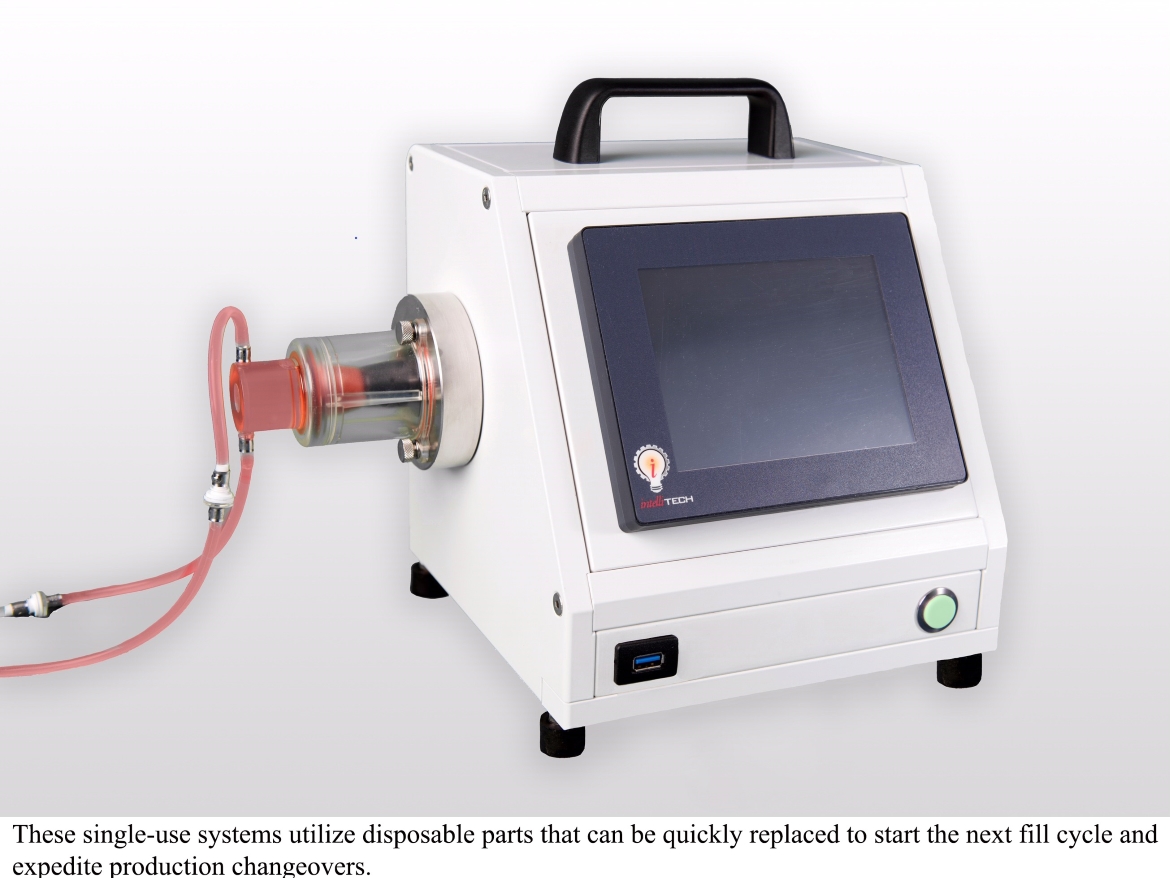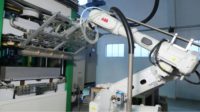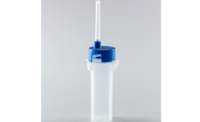Scaling Single-Use Liquid Dispensing from R&D to Automated Production

Image courtesy of Intellitech
At pharmaceutical companies, including those that deal with reagents, buffers, biologics, cells, immunotherapy, and similar products, liquid measurement and filling are often done by hand during R&D and lower initial production volumes.
However, as advances are made through the development process, increasing demand for production volume and product changeover increase, result in significant drawbacks to this approach. With hand filling some amount of overfilling, underfilling, or product spillage can be expected, which can be costly when handling high-value product. Manual dispensing and measuring can also lead to repetitive stress injuries for employees.
In addition, in automated filling systems, production is traditionally accomplished with equipment that must be thoroughly disassembled, washed, and sterilized between batches. The process is time-consuming, expensive, energy-intensive, and opens the door to possible cross-contamination as well as occasional control breakdowns.
As a solution, a growing number of companies are turning to sterile, single-use, closed liquid dispensing systems and kits. These utilize disposable parts that can be quickly replaced to start the next fill cycle and expedite production changeovers. Such systems reduce the risk of cross-contamination since only the single-use components are in contact with the liquids being dispensed.
This approach delivers superior, repeatable dispense accuracy after hundreds or thousands of cycles while minimizing repetitive motion injuries. It can also be scaled up to accommodate requirements from R&D to fully automated, GMP manufacturing.
“Single-use liquid dispensing has become a trend because of its production flexibility, streamlined production [versus cleaning the entire system], and relatively nominal cost,” says Derek Dunn, P. Eng., Senior Director, Services and Customer Experience, LuminUltra, a biological diagnostic testing company that develops tests and reagents for environmental, industrial, and diagnostic monitoring, and is a key supplier of COVID-19 clinical testing reagents for the Government of Canada.
In the case of LuminUltra, the company develops a range of testing solutions. One of these is its 2nd Generation adenosine triphosphate (ATP) test, which measures ATP in water across diverse industries. This requires multiple liquid reagents in different volumes, dispensed into containers of various sizes.
According to Stephen Galpin, Packaging Supervisor, LuminUltra, when an existing product line was produced in lower volumes up to six operators were needed to dispense the liquid reagents using pipettes and affix caps and labels. While this was sufficient during R&D and at the initial production levels, continued growth eventually forced the company to decide between increasing staffing or automating the process.
“We were growing every year and we reached a fork in the road, so we had to decide if we wanted to hire more people just for filling,” says Galpin. “We ultimately decided to automate and re-assign the personnel to other more productive areas.” LuminUltra also sought an efficient process that minimized any potential contamination or reagent degradation. “One of the major challenges was avoiding contamination of the reagents, given that the introduction of even small amounts of ATP [from unintended sources] would quickly degrade the quality of the test,” says Galpin. After searching for a market solution and reviewing multiple bids, LuminUltra selected a single-use liquid measuring and dispensing system that included an i-FILL Pump, from Florida-based Intellitech, a manufacturer of precision liquid filling and closure equipment.
Single-use technology minimizes the risk of contamination by utilizing sterile, disposable fluid path components from product source to dispensing nozzle. Each kit is a complete unit containing intake and discharge tubing, check valves, complete pump parts, and a dispensing tip/nozzle. The disposable fluid path kits are assembled and packaged in an ISO Class 7 cleanroom and post-assembly gamma irradiated to eliminate or minimize any biological risk and maintain microbial control.
Production downtime is minimized and changeovers accelerated by eliminating the need to disassemble, clean, sterilize and reassemble fluid path components between batches. Changes from one reagent to another take only a few minutes and require no special tools. The total start-up time usually takes about 30-minutes, but starting up the automation line “is down to about 10 minutes,” says LuminUltra’s Dunn.
Dunn says the equipment from Intellitech was customized to fit the available space as well as to accept different container sizes and configurations. “Because the volume of each reagent is different, the ability to handle containers of various sizes was important,” says Dunn. “Our process involves multiple reagents. We might need five milliliters of reagent for one aspect of the test, nine milliliters for another, and 125 ml and 250 ml bottles for others.”
Despite being customized, the system was easy to use out of the box, allowing LuminUltra to quickly begin dispensing liquids with the needed volume and accuracy.
Dunn says he also appreciated Intellitech’s willingness to consult and provide expertise throughout the process, which he views as vital for a successful implementation. “It wasn’t just, ‘Here's the machine. This is how you run it. Good luck, see you later.’ They helped us to optimize the process by providing input on operator selection, training, and production flow. That was very helpful,” says Dunn.
The system can also be easily reconfigured to accommodate a range of fill volumes, dispense profiles, containers, and closure types. Custom-designed component parts are also available utilizing in-house design and 3D printing, as needed. “That kind of flexibility facilitates line expansion in the future. It is nice to have the option to scale up when we are ready for it,” says Dunn.
Gentler Dispensing of Biologics
In addition to dispensing a variety of liquids, filling equipment is also increasingly being used to dispense sensitive “biologics” manufactured by or extracted from living sources – typically proteins, cells, nucleic acids, viruses or vaccines
In recent decades, protein-based therapeutics have become increasingly important to the pharmaceutical industry. These biopharmaceuticals are costly, difficult to produce, and susceptible to physical degradation when subjected to high shear forces during dispensing.
In fact, biologic products can degrade when dispensed using peristaltic pumps. These pumps contain fluids in a flexible tube, housed by a pump casing. A rotor outfitted with a system of rollers compresses the tube as it turns to create continuous fluid flow. However, the pump’s shearing force is not conducive for live cells and its rollers can gradually damage the tubing, causing it to wear and stretch over time. The shearing force can even potentially release or shed small quantities of tubing material into the liquid as it flows.
The alternative to peristaltic pump technology is a hybrid pump design that is gentler and more reliable when dispensing biologics. Because liquids in the pump are not squeezed by rollers, there is no opportunity for cultures or delicate specimens to be harmed as it flows through the tubing. In terms of accuracy, this hybrid pump-based filling equipment, like the i-FILL, delivers repeatable liquid filling accuracy ≤ .5% of the intended volume. In comparison, conventional pump accuracy is usually within 1-2%.
Whether pharmaceutical companies are in basic R&D, product development or rapidly scaling up through clinical studies to full-scale GMP manufacturing, utilizing modular, single-use liquid dispensing systems that can be scaled up to meet increasing production demands can be a tool to achieve greater production efficiency, flexibility, reliability, and profitability.
For more information visit Intellitech
Looking for a reprint of this article?
From high-res PDFs to custom plaques, order your copy today!






